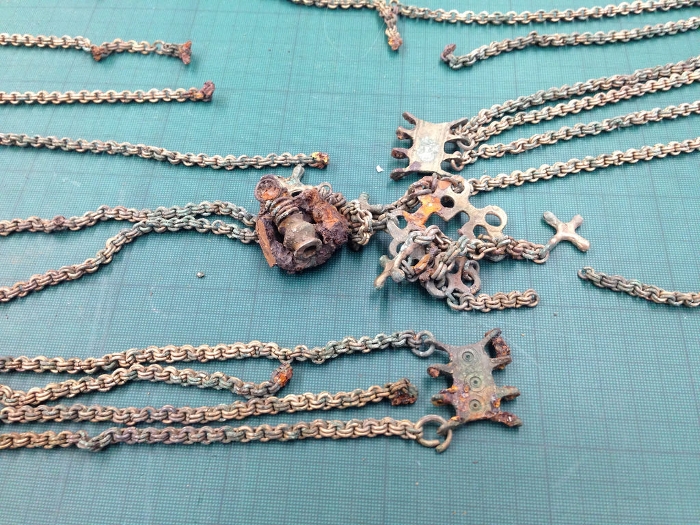Prins Bernhard Cultuurfonds winner - Marcus Adrian Roxburgh
His PhD research project - entitled Charlemagne's Workshops - is an ongoing investigation into the role of copper-alloy craft production in the early medieval economy of North-west Europe. The geographic limits of this research have up until now centred on the Netherlands (Frisia Magna in medieval times) and so far has gathered compositional data on over 3,800 artefacts. The next stage in the project is to contextualise this data within an international framework.

Ady Roxburgh has been awarded a grant from the Prins Bernhard Cultuurfonds, to support collaboration with researchers at Tartu University, Estonia.
He is a self-funding external PhD researcher, supervised by Prof. dr. Frans Theuws - Roman Provinces, Middle Ages & Modern Period. The award will fund a three months stay in Estonia, to conduct research with staff at the archaeological laboratories at Tartu University.
The composition of copper-alloy artefacts from Scandinavia and in particular the Baltic is of great interest in understanding the links the people of Frisia had with the Viking North. The reintroduction and subsequent growth in the use of brass as a choice of copper-alloy, in the Viking/Carolingian age is of particular interest. This is because the zinc used to make brass is thought to have been reintroduced from mines in the Ardennes region of Belgium. This idea has become problematic because the many brass items found in the Baltic region including ingots, suggesting a wide spread use of brass in the area. But no ingots have been found within the current Frisian study area. Furthermore particular groups of equal arm fibulae - a common copper-alloy artefact - thought to be from the central Frankish areas and therefore much closer to the Ardennes, continue to be produced in a bronze tradition during this period.
Brass at this time is widespread in the eastern Mediterranean. Could copper-alloy objects produced in brass and found in the Frisian areas - especially those bearing Scandinavian inspired decoration - be the result of Northern long distance trade rather than a local Frankish one? This new research initiative will hopefully shed light on this long-distance trade, through looking at the reintroduction of brass in the Baltic, perhaps providing evidence of early contact between Frisia, Scandinavian trading centres and the Byzantine Empire.
